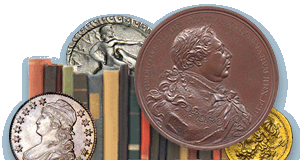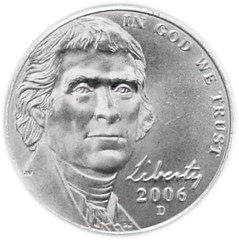
PREV ARTICLE
NEXT ARTICLE
FULL ISSUE
PREV FULL ISSUE
THE COIN MAKEOVER AMERICA NEEDSJim Huntington published the following blog post about the U.S.'s current circulating coins. We're republishing it here with permission. -Garrett I grew up in the 1960s. My allowance was nowhere near a dollar a week, and I had respect for all of it. I could spend a penny by itself – at a local toy store, it would buy a piece of candy. A dime would get me a small bag of that, or two small but ordinary Hershey's bars. A quarter, or at least 29 cents plus Chicago's 4% sales tax, would fetch my choice of several plastic toys. It was rare for me to have a dollar bill – I mostly only managed that at Christmas, or a few times when selling lemonade. The rest of the year the only money I handled was coins. A pocket full of them was a pocket full of possibilities. Now it's 60 years later. Prices have risen roughly tenfold, but what we buy things with, except for effectively losing the half dollar and gaining the rarely-seen dollar coin, is the same. A pocketful of our coins is, to many, a nuisance, as even a quarter has less spending value than one cent did in the 1940s.
However, that will bring another coin problem to the front of the line. Per a February 11th post on Hero Bullion, nickels are now running us 13.8 cents apiece. With only the penny being discontinued, demand for nickels will probably increase, but even if it doesn't, that's a lot. Even if we also cut out these 5-cent coins, we are facing upcoming dangers from the dime (5.76 cents apiece) and quarter (14.7 cents apiece). We need a longer-term solution. Other affluent countries have done far better. Those using the euro have had three coins worth more than our quarter for up to 23 years. Canada discontinued its one-cent coin in 2012, and has two higher than ours. Since 2016, Sweden has had only four circulating coins, with the face value of the lowest, 1 krona, about 10 cents, and the 5 and 10 kronor worth more than any truly circulating American coin. Switzerland is now up to five coins out of seven valued higher than 25 U.S. cents, and Japan, despite its currency value shrinking, still has three. In such places, almost all coins worth less than one US cent have either been ended or have long since left circulation. It's past time for a full-scale makeover of United States circulation coinage. I recommend we discontinue all four of our common circulating denomination coins. We should replace them with a 10-cent (not "dime," an antiquated term worthy of retirement) issue, and a 50-cent (not "half dollar") piece. Both should be minted from an alloy made almost completely of copper, at Tuesday's $4.91 per pound price hardly cheap but, for higher face values, reasonable. The 10 cents should be slightly larger than the current penny, and the 50 cents a little bit smaller than today's quarter. After creating designs visually different from our existing coins, we could continue by putting Abraham Lincoln's image on the 10 cents and Thomas Jefferson on the 50. For a third coin, we will need to honestly address the situation with our one-dollar notes. Only if we stop making them will $1 coins take to common circulation. I understand there are international reasons why this bill is still being made, but there are real savings achievable if we can replace them, within America itself if nowhere else, with more durable alternatives. The latest size and composition would be good enough, if it had no entrenched competitor. I would choose George Washington on the front. Two other matters will need attention. First, despite Canada's success with its $2 "toonie," we should not attempt a two-dollar coin, as throughout American history people have overwhelmingly rejected all money with two-cent and two-dollar face values. Second, we should not demonetize any discontinued coins. Four-drawer cash registers will have room for mixed old ones, and of course banks would continue to accept them. As well as savings on manufacture, this plan would greatly reduce coin handling, which pushes up labor costs. By not using the second number to the right of the decimal point, there would be no rounding issues, which have stopped many people from accepting the penny's removal. While some would take it as cheapening if we had less expensive-looking coins, others would welcome the end of so many with almost no purchasing power. With continued inflation control, we would not need to consider size-and-composition changes for decades. The overall savings for the American people would certainly be in the hundreds of millions of dollars and probably in the billions. Can we support this potentially bipartisan proposal? I think we can. It might start us on the way to agreeing on more things. And the reminder that we made it work would be right in our pockets.
To read the complete article, see:
Wayne Homren, Editor The Numismatic Bibliomania Society is a non-profit organization promoting numismatic literature. See our web site at coinbooks.org. To submit items for publication in The E-Sylum, write to the Editor at this address: whomren@gmail.com To subscribe go to: Subscribe All Rights Reserved. NBS Home Page Contact the NBS webmaster 
|



